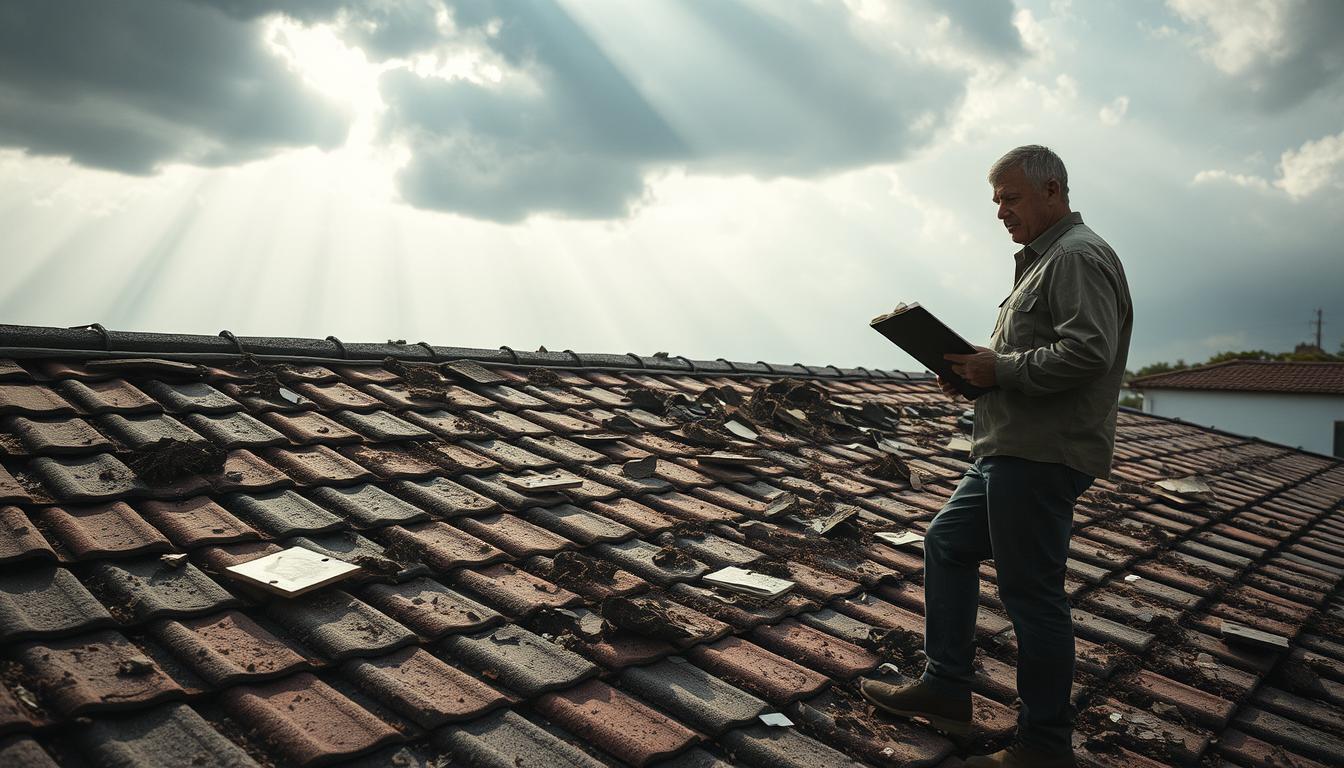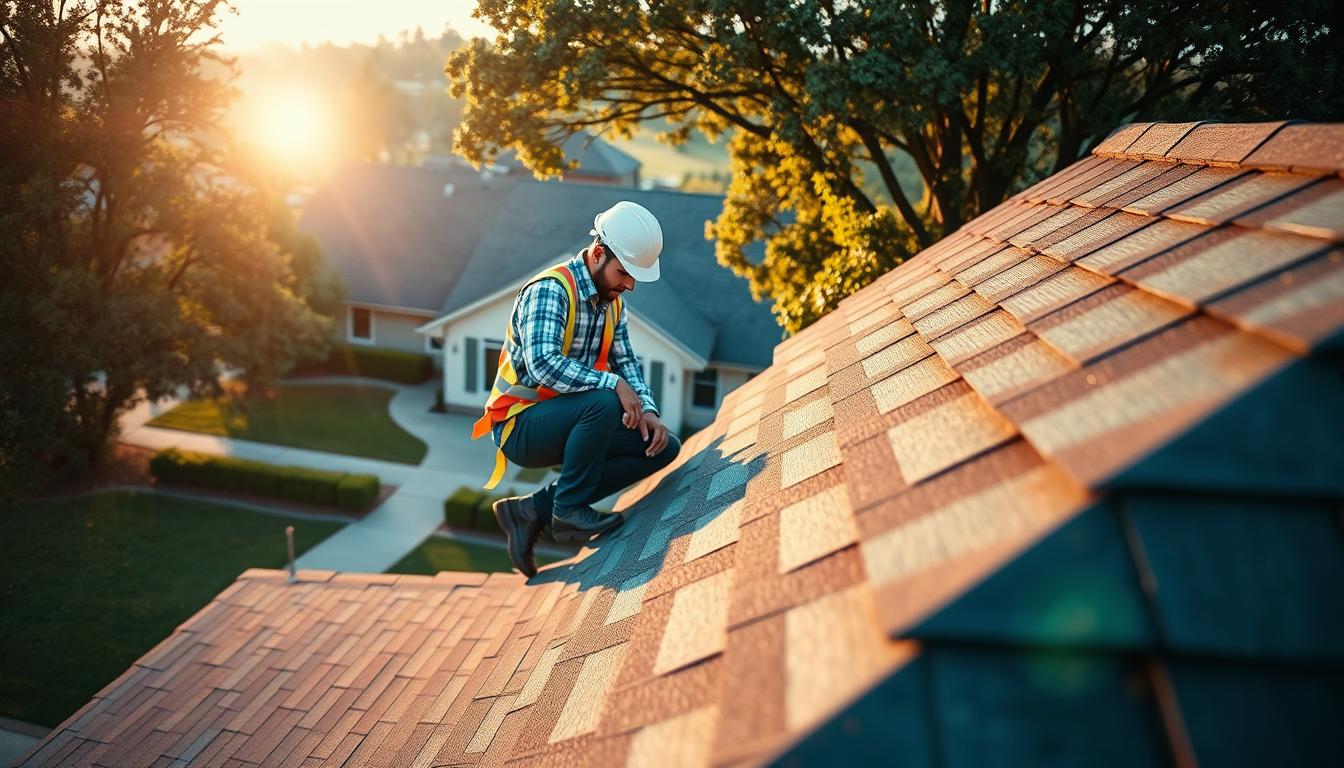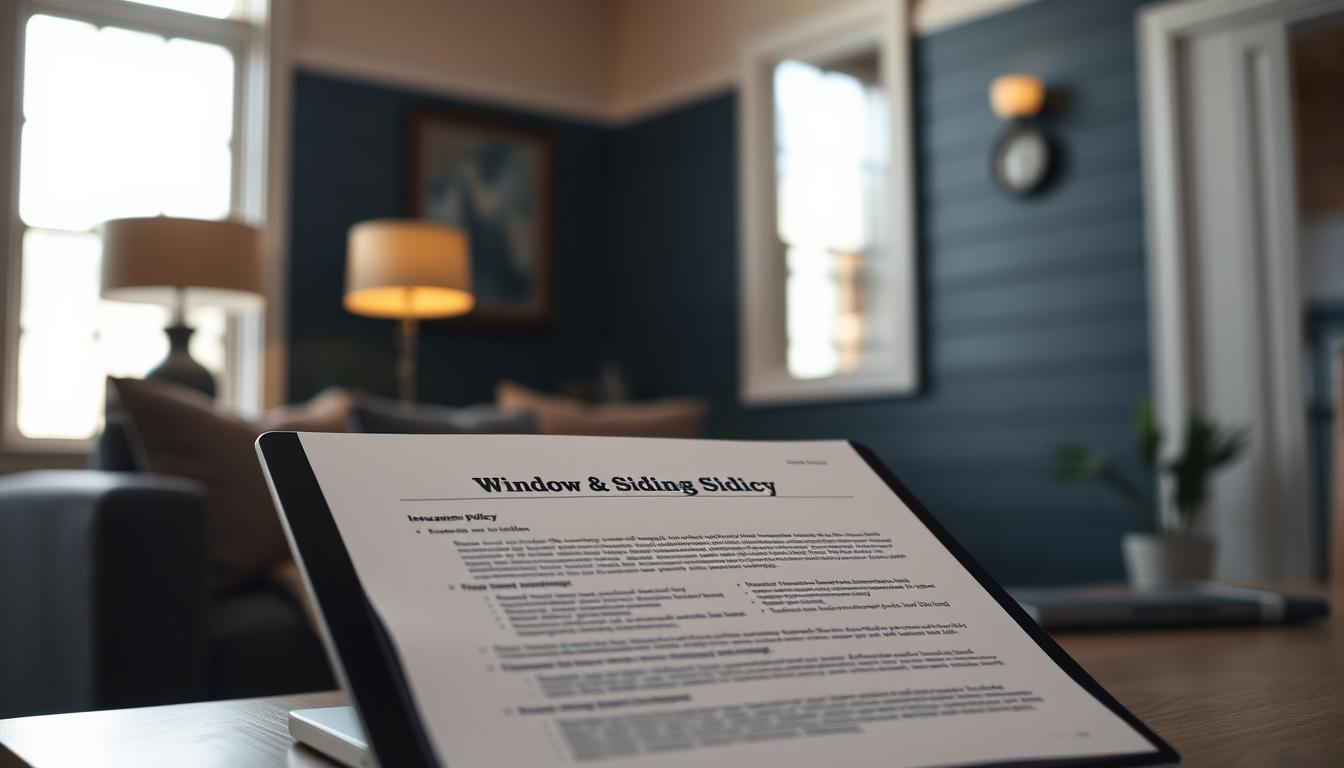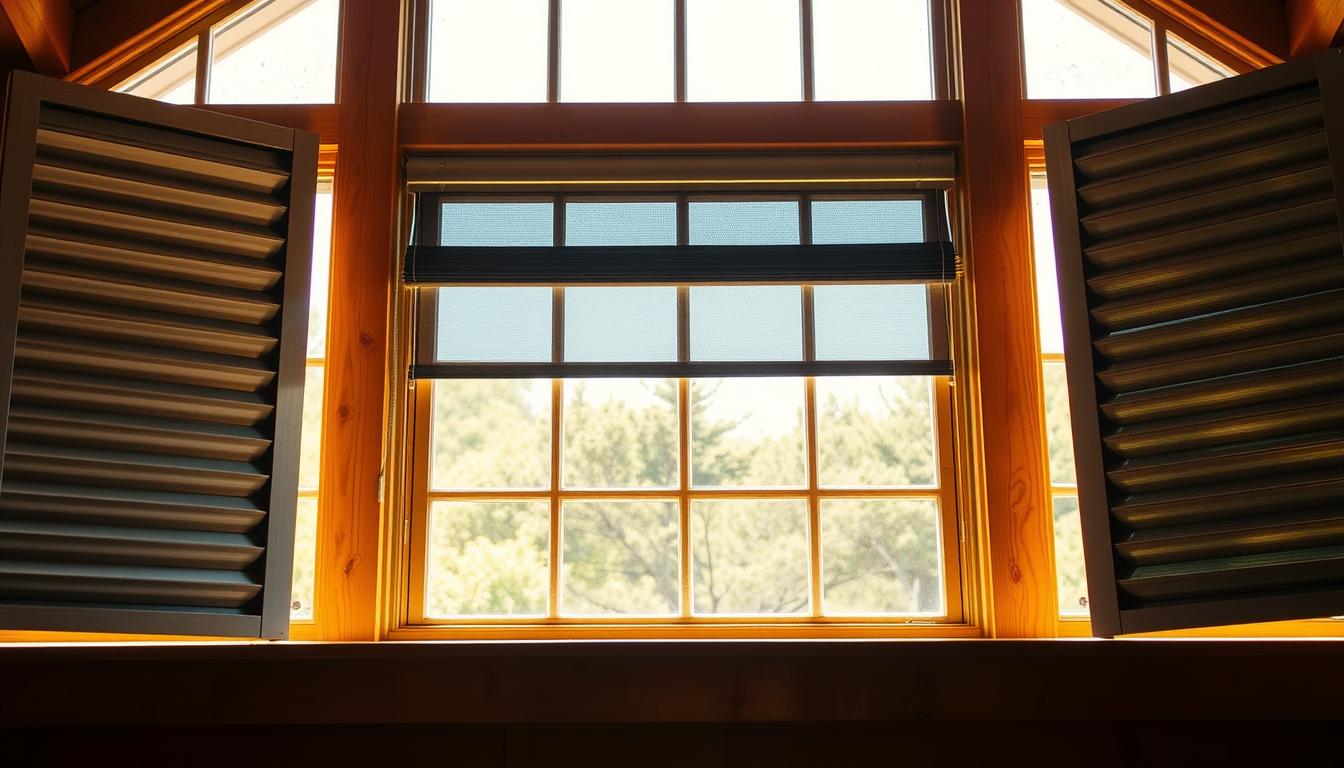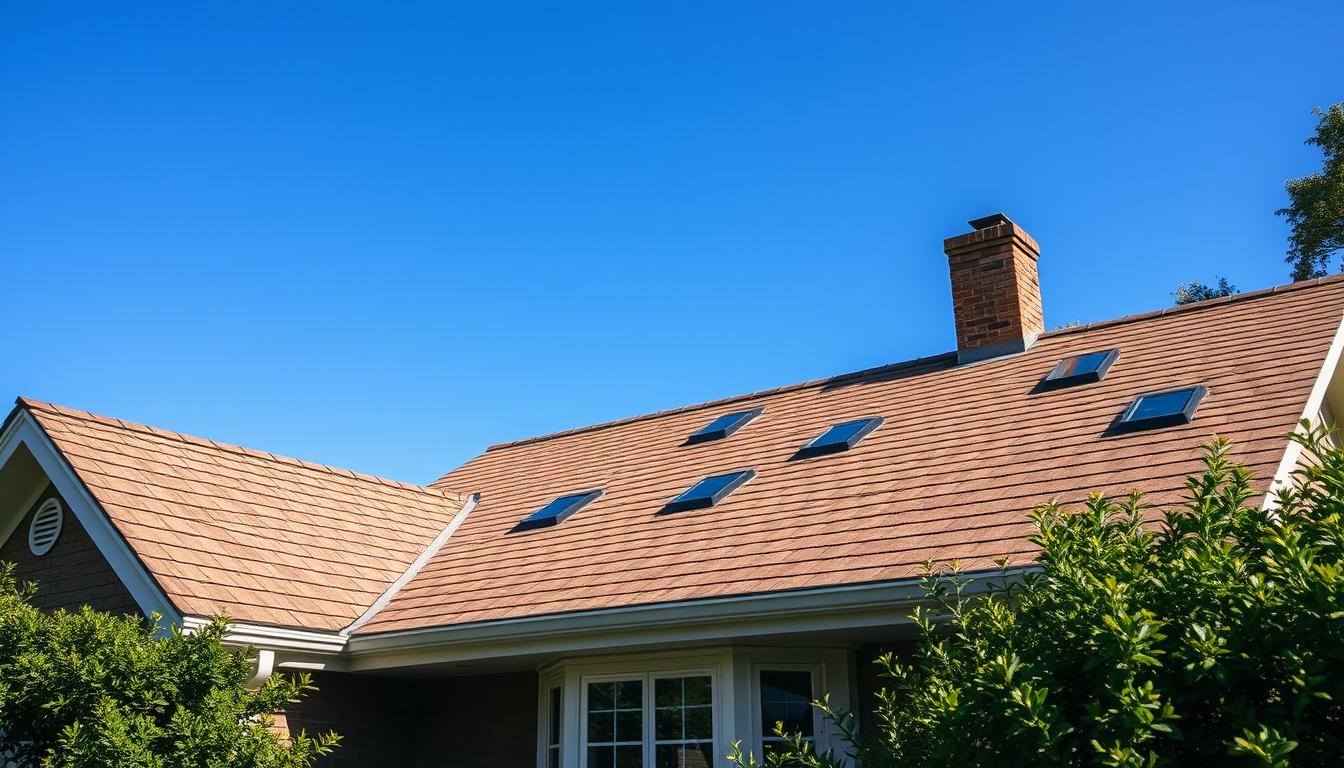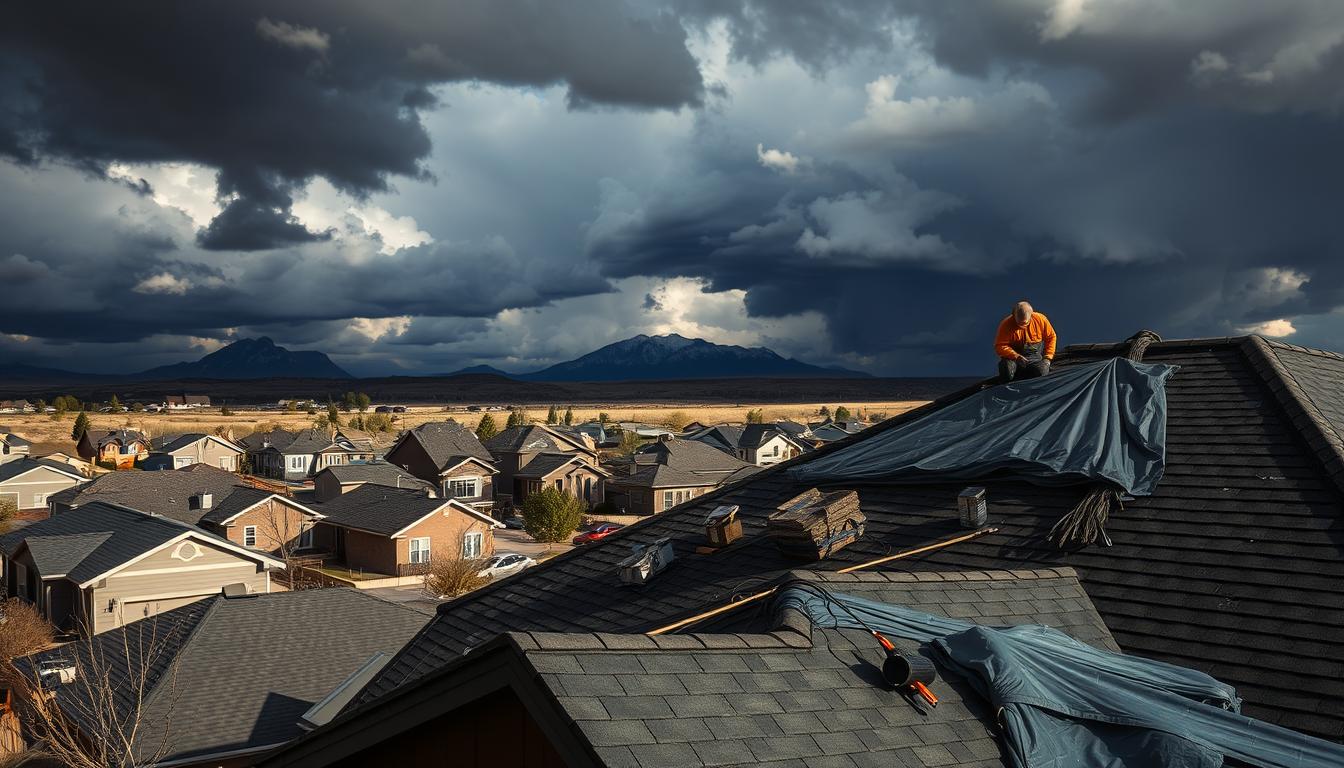Keeping your home safe from wind damage is key. The Rich Co Inc has over 30 years of experience helping homeowners with storm damage. Wind can damage roofs quickly, leading to expensive fixes.
Severe weather like tornadoes can severely harm roofs. Most homeowners’ insurance covers wind damage. This is a big help for unexpected roof repairs. Our team helps find and fix roof damage.
Dealing with insurance for storm damage can be tough. Knowing your policy and the right steps can help a lot. It’s important for getting your repair costs covered and keeping your home safe.
Key Takeaways
- Wind damage is a common cause of roof damage in residential properties
- Homeowners insurance typically covers wind-related roof damage
- Professional inspection is crucial for identifying hidden roof damage
- Different insurance policies offer varying levels of roof replacement coverage
- Prompt documentation and claim filing are essential after storm damage
Understanding Wind Damage to Roof: Common Signs and Risks
Wind damage to roofs can be subtle or dramatic. It poses significant challenges for homeowners. Damage can start as early as 45 mph wind speeds. It’s vital to understand these risks to protect your home.
Roofs face many threats from wind, with some areas more at risk. The edges and pressure points are especially vulnerable. Wind can cause damage from missing shingles to complex structural issues.
Visual Damage Indicators
Spotting wind damage requires a careful eye and thorough inspection. Look for:
- Missing shingles exposed after strong winds
- Curled or lifted shingles at roof edges
- Visible granule loss collected in gutters
- Broken or cracked roofing materials
Hidden Damage Signals
Not all wind damage is easy to see. Look for hidden signs of roof leaks and structural issues, such as:
- Water stains on interior ceilings
- Damp spots in the attic
- Peeling paint near roof lines
- Discoloration of interior walls
Wind speeds between 58-74 mph can cause major damage. They might rip off shingles, letting water into your home. Experts suggest getting a professional inspection after any storm with winds over 45 mph to avoid high repair costs.
Early assessment can save homeowners thousands in repair costs. Regular roof checks and knowing wind damage signs are crucial for keeping your home safe.
Types of Wind Damage That Affect Different Roofing Materials
Wind damage affects roofing materials in different ways. This creates unique challenges for homeowners. Knowing these vulnerabilities can help protect your home from shingle loss and structural issues.
Asphalt shingles are very vulnerable to wind damage. Winds between 50-70 mph can lift, crack, or remove these shingles. Losing granules is a big concern, as it weakens the shingle’s protection and can shorten its life.
- Wood shingles may split or break under strong wind conditions
- Metal roofing tends to be more resilient but can still experience denting from debris
- Tile roofs might crack or become dislodged during severe wind events
Hail damage roof risks increase during wind storms. High winds and hailstones can cause a lot of damage. This can strip away protective layers and make your roofing system vulnerable.
Different wind speeds cause different levels of roof damage:
- Light winds (up to 30 mph): Minimal risk, potential gradual shingle loosening
- Moderate winds (30-50 mph): Notable damage, potential shingle lifting
- Strong winds (50-70 mph): Significant impact, potential complete shingle removal
- Severe winds (70+ mph): Extensive structural damage possible
Professional roof inspections can spot and fix wind damage early. Homeowners should get regular checks, especially in areas with severe weather.
When and How to Inspect Your Roof After a Storm
Storm damage to your roof can quickly turn from small problems to big structural issues. After a hurricane or tornado, it’s key to inspect your roof carefully. This helps protect your home and can help with insurance claims.
Experts say to follow a step-by-step plan for checking your roof after a storm. Always put safety first during these checks.
Safety Precautions for Roof Inspection
- Wait until the storm has completely passed
- Avoid climbing onto the roof if conditions appear unstable
- Use binoculars for initial ground-level assessments
- Wear protective footwear if you must inspect closely
- Consider hiring a professional inspector for comprehensive evaluation
Documentation Strategies
- Take clear, dated photographs of visible damage
- Record video evidence from multiple angles
- Document specific areas of concern with detailed notes
- Measure and mark damaged sections
- Collect repair estimates from certified roofing professionals
For help with your roof inspection after a storm, call The Rich Co at (719) 287-5385. Their team can assess the damage and help with your insurance claim.
Quick and detailed documentation is crucial for your insurance claim. About 60% of homeowners who document storm damage well get their claims approved.
Insurance Coverage for Wind-Related Roof Damage
Understanding insurance for roof repairs and replacements can be tricky. Homeowners insurance usually covers damage from wind, a common cause of property damage.
Two main policy types affect roof damage claims:
- Actual Cash Value (ACV) Policy: Pays the roof’s depreciated value
- Replacement Cost Value (RCV) Policy: Covers full replacement costs without depreciation
Most homeowners policies cover roof damage from wind. Roofing experts can guide you through the claims process. They know how to document damage and work with insurance.
Important steps for roof damage claims include:
- Take photos of the damage
- Get a professional roof inspection report
- Know your policy limits
- File your claim quickly after a wind event
Roofing experts suggest regular inspections to find and fix problems before big winds hit. This can make roof repair or replacement claims easier.
Filing a Successful Insurance Claim for Storm Damage
Getting through an insurance claim for roof leaks and storm damage needs careful planning and detailed records. Homeowners must act fast after wind damage, which can happen from winds over 74 mph in storms or hurricanes. It’s important to know your policy and gather all the evidence of damage.
Photographic evidence is key when filing a claim. Take clear photos of missing shingles, water leaks, damaged flashing, and any damage from flying debris. Adjusters need this visual proof to back up your storm damage claim. The Rich Co suggests getting a professional roof check to add weight to your claim.
Claim Process Steps
Insurance companies want you to report damage quickly, usually within a year or two. Knowing if your policy covers Actual Cash Value (ACV) or Replacement Cost Value (RCV) is crucial. This knowledge helps set the right expectations for what your policy might cover for roof damage.
Working with Contractors
Choosing a trusted roofing contractor like The Rich Co can make the claim process easier. They know what insurance needs and can help with estimates and any claim issues. Their skills ensure your roof is fixed right and you get the most from your insurance for storm damage.
FAQ
What are the most common signs of wind damage to a roof?
How quickly should I address wind damage to my roof?
Does homeowners insurance typically cover wind damage?
What should I do if I suspect wind damage to my roof?
How can wind damage impact different roofing materials?
What factors determine the severity of wind damage?
How long do I have to file an insurance claim for wind damage?
Can I do roof repairs myself after wind damage?
How much does wind damage roof repair typically cost?
What additional damage can wind cause beyond roof issues?
Source Links
- https://www.billraganroofing.com/blog/insurance-cover-roof-damage-wind
- https://www.amfam.com/resources/articles/understanding-insurance/does-homeowners-insurance-cover-wind-damage
- https://www.billraganroofing.com/blog/how-spot-wind-damage-roof
- https://www.superstormrestoration.com/blog/how-to-tell-if-high-winds-damaged-your-roof/
- https://www.becn.com/beaconbits/homeowner-learning/identifying-wind-damage-on-the-roof-and-shingles
- https://monarchroofing.biz/wind-damage-to-roof/
- https://anvilroofers.com/how-wind-speeds-affect-roof-cause-damage/
- https://www.coloradoroofing.org/news/5-types-of-roof-storm-damage
- https://alphaenvironmental.net/blog/understanding-the-different-types-of-wind-damage/
- https://roofexpert.com/the-dos-and-dont-of-assessing-a-roof-after-a-storm/
- https://www.amfam.com/resources/articles/at-home/how-to-check-your-roof-for-damage
- https://www.travelers.com/resources/home/maintenance/homeowners-insurance-for-wind-damage
- https://www.progressive.com/answers/does-home-insurance-cover-roof-damage/
- https://artisanqualityroofing.com/complete-guide-to-a-wind-damaged-roof-insurance-claim/
- https://www.insuranceclaimrecoverysupport.com/roof-storm-damage-insurance-claim/
- https://www.billraganroofing.com/blog/things-expect-when-filing-insurance-claim-roof-damage

